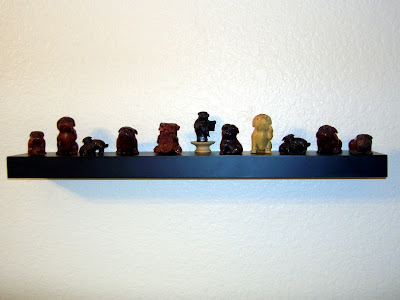
Frank went to the vet's on Tuesday for his yearly exam and I am proud to report he is doing great (except for an ear infection, as usual). They also tried to sneak in a prescription for stinky diet food for Frank because he is STILL over-weight but I told them "No".
Last vet visit (Tues. June 20, 2006), Frank weighed 29.6 lbs.
This vet visit (Tues. May 22, 2007), Frank weighed 26.4 lbs.
We must be doing something right because he is still losing weight. HOORAY!!!!!!!! :-)








